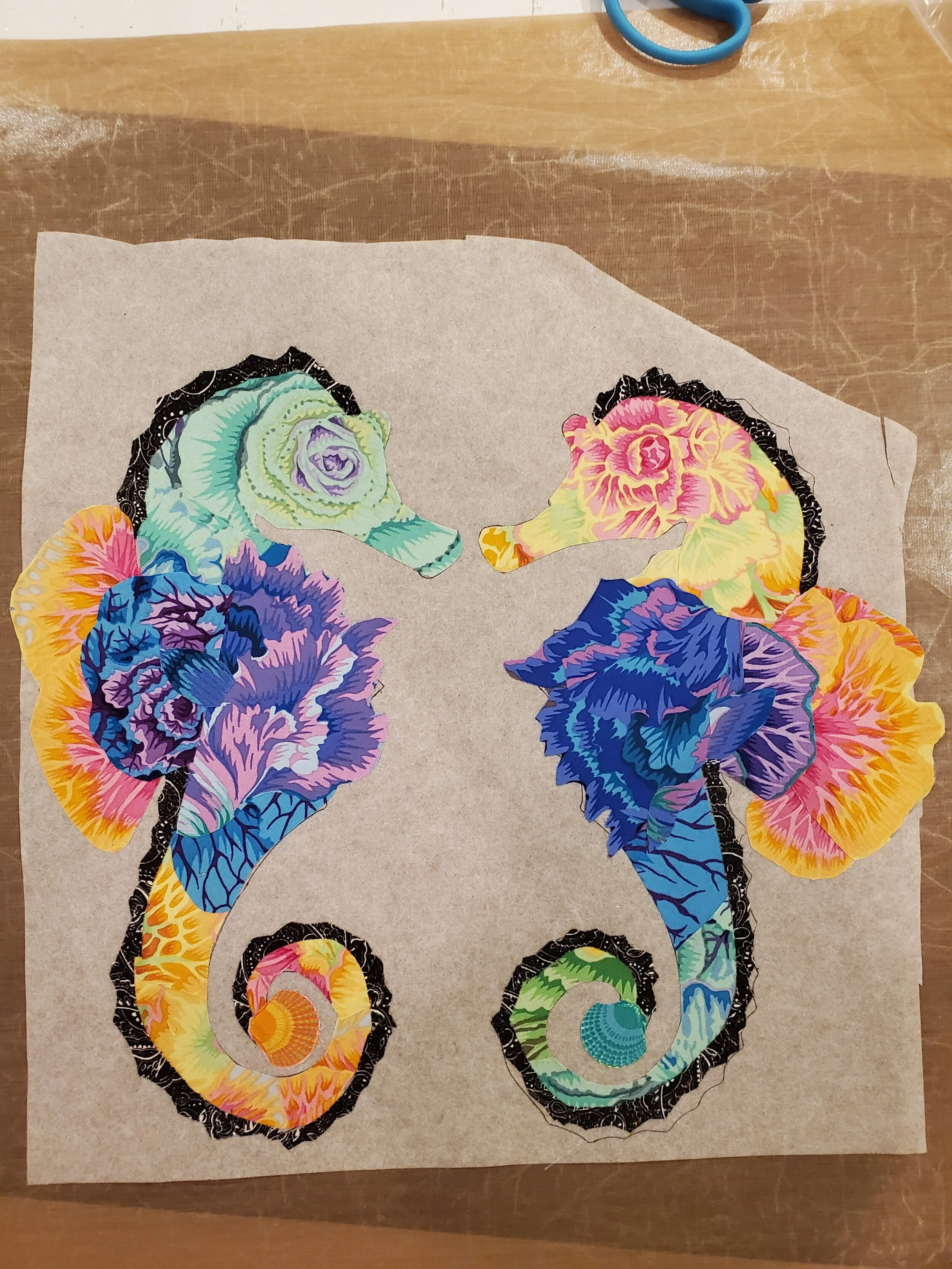Seahorses, “Good Luck”, & Quilts
The scientific name for seahorse is Hippocampus. The term “hippocampus” is derived from the Greek word for “seahorse,” (hippos meaning horse, and kampos meaning sea monster) in light of its curved, tube-like structure. The hippocampus is a structure in the brain, which lies slightly above the ears and is tucked away in the medial temporal lobe resembling a “seahorse” shape. Neuroscientists study how information and memory are processed in the hippocampus. (In the photos, I custom made the dark purple seahorse wall quilt for a Neurology doctor. The seahorse is a symbol for neurology and purple is the color that represents epilepsy.)
The Seahorse is a unique creature that is monogamous and mates for life. They are among the only animal species on Earth in which the male bears the unborn young. Male seahorses have a pouch on the front and when mating, the female deposits her eggs into his pouch, while the male fertilizes them internally. He carries the eggs in his pouch until they hatch, then releases fully formed, miniature seahorses into the water. Fully grown, seahorses are .6 to 14 inches, the size of a teacup.
Because of their equine shape, seahorses are inept swimmers and die easily if caught in storms. Their life span in the wild is 1-5 years. Using a small fin on its back, it flutters 35 times a second to propel forward and uses smaller fins near the back of the head for steering. Seahorses anchor themselves with their tails to sea grasses, corals, and mangroves. They are a carnivore fish and voracious eaters, grazing continually consuming 3,000 or more brine shrimp per day, using its elongated snout to suck in plankton and crustaceans that drift by.
As you can see from the photos, I have a slight obsession with Kaffe Fassett floral material. I use it in my wall quilts for horses, seahorses, and a few other designs, I have coming up. The bright tones and fauna make me feel like I’m somewhere tropical. I’m drawn to the jewel-tone colors and love how the quilt design pops with a solid background. They are for sale on my website and I can customize with your size and color requests.
One afternoon this past May, I spotted a seahorse gracefully floating by a Florida lagoon near the dock. Aside from seeing seahorses in an aquarium when my children were small, I’d never seen one in a natural habitat, let alone hold it while it curled its tail around my finger to anchor itself. The moment only lasted a few seconds, but I was able to get a close look, feel its briny spine and take a few pictures of lucky encounter. I quickly returned creature back in the water where it proceeded to slowly make its way down the lagoon. I’m not sure how it came to be there; as no other seahorses were around. The Seahorse is believed to be a symbol of good luck and fortune. It is also considered to be a symbol of strength and power. Perhaps, it was my moment of good luck and fortune to find it that day? It was a reminder of my strength during this difficult past year and half watching my mother battle brain cancer. Whatever the reason, for the encounter, I am thankful for the reminder of strength, the fragility of life, and to be grateful for each day we have.
Children’s Books about seahorses & activities:
Mr. Seahorse by Eric Carle, Seahorses by Jennifer Curtis
The Sign of the Seahorse by Graeme Base
Sea Horses by Nicole Corse



















